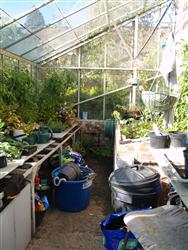
Study Seed Propagation Techniques to enhance your skills and develop your career.
Seed propagation can be inexpensive and with many (not all) types of plants, it is the most cost effective way of propagating large quantities quickly. Some plants though germinate easily, and others don't. For some species seed and seedlings must be handled in a very particular way to ensure not only germination, but also survival of the seedling. This is a course provides valued industry skills for people working with:
- Production nurseries
- Seed companies
- Re-vegetation projects
- Plant breeding